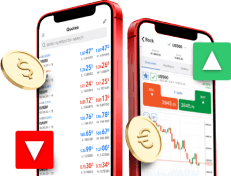Good moods on the US stock market pushed local indices to further historical highs. Thus, the bull market that began after the financial crisis a decade ago is still ongoing. Investors are so calm about further increases that this may contribute to increasing concerns about their sustainability.
We are talking about the VIX index, which was created by the Chicago Board Options Exchange (CBOE). It presents the expected volatility by market participants in the next 30 days. It is therefore an index of variability. The VIX index is created on the basis of data from the options market on the S&P 500 index. In short, VIX may indicate what volatility investors expect in the next 30 days on the S&P 500 index. It is also a measure of market risk and sentiment.
At a time when the VIX index is at low levels, investors do not expect high volatility, and therefore the investment risk seems smaller, in the absence of expectations of sharp increases, but above all also of sharp falls. Low VIX index values may therefore be an incentive for bulls buying shares. In turn, a high VIX index value may indicate the expected high volatility. This could mean both rapid increases and rapid decreases, because VIX itself does not indicate the direction. Nevertheless, the expected high volatility, as a rule, discourages the holding of shares, looking at historical data, and as a result their prices fall with the index. That is why it is often called the fear index.
The historical relationship of the S&P 500 index (US500 on the Conotoxia trading platform) and the VIX index shows a negative correlation. The lower the VIX, the higher the S&P 500 and vice versa. So what has now happened that we mention this index? Well, according to the COT report, where we can observe the positioning of institutional investors on the VIX index futures, record short positions were recorded.
VIX futures net long positions. Source: tradingster.com
This may mean that an unusually large proportion of market participants expect a decline in the VIX index. This could lead the market to an oversold area and it would be difficult to keep VIX at such low levels. In the case of any negative signal short squeeze may occur. A similar phenomenon occurred at the end of January 2017, where investors very quickly closed short positions on VIX futures. At that time, strong decline in the S&P 500 index could be observed.
Daniel Kostecki, Chief Analyst Conotoxia Ltd.
Materials, analysis and opinions contained, referenced or provided herein are intended solely for informational and educational purposes. Personal Opinion of the author does not represent and should not be constructed as a statement or an investment advice made by Conotoxia Ltd. All indiscriminate reliance on illustrative or informational materials may lead to losses. Past performance is not a reliable indicator of future results.
65% of retail investor accounts lose money when trading CFDs with this provider. You should consider whether you understand how CFDs work and whether you can afford to take the high risk of losing your money.


